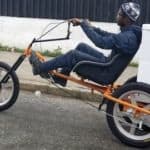Innovations in E-Mobility: An Electric Vehicle Startup Seeks to Gain Traction in Mexico
Mexico City is the fifth most populated city in the world, with over 21 million people – and the most congested city in North America. Over the years, traffic and pollution levels have spurred government efforts to improve mobility in the city, including the long-standing program “Hoy No Circula” (“No-Drive Days”), which bans drivers from using their vehicles one weekday per week based on the last digit of the vehicle’s license plate. In recent years, the city has also worked to become less car-centric by designating bike lanes on roads, and expanding access to low- and zero-emissions public transport options like the Metrobús and electric trolleybuses. This year, the Mexican national government is expected to finalize its first National Electric Mobility Strategy to promote and position electric mobility as a viable and sustainable alternative to combat climate change.
Momentum is also building in the private sector, with more startups offering new mobility alternatives in various cities. One such startup is Zacua, the first Mexican electric vehicle (EV) brand. Founder Jorge Martínez first conceived of the company in 2000, as he developed a vision to address the host of pressing mobility issues in Mexico City, from protecting public spaces to alleviating traffic congestion and pollution. He believed a solution to these problems should not only reduce the number of cars on the roads, but also make them smaller, higher-quality and electric. Using his own capital, he began building the business case to make Zacua a reality, and the brand officially launched in 2017. To this date, Zacua remains a family-owned startup.
At the William Davidson Institute at the University of Michigan, we work with innovators and entrepreneurs in low- and middle-income countries to help them develop and scale profitable business models, and disseminate knowledge around these innovations for the benefit of the broader sector. In the context of the global energy transition, we’re working to help mobility companies tap into new business opportunities in these markets – while sharing the learnings this work is generating. One of the companies we are collaborating with is Zacua, and I spoke with Nazareth Black, Zacua’s CEO and a prominent e-Mobility advocate in Mexico, to learn more about the company’s efforts to accelerate the adoption of e-Mobility solutions in the country.
Diana Páez: Tell us more about Zacua’s business model.
Nazareth Black: We are an ecosystem of businesses focused on sustainable mobility. These businesses include Motores Limpios, our umbrella company; Tekini, a line of small-scale, custom-made electric utility vehicles; Zacua; and a new business line to offer soft landing services to help international companies interested in manufacturing EVs in Mexico to enter the ecosystem. This ecosystem gives us a competitive advantage relative to other companies. We are proud of the fact that ours is an iconic project: We are the first Mexican EV – the first to launch and the first out in the streets. We have developed know-how and have evolved to have different business lines and projects to cover various e-Mobility needs. We have a small plant located in Puebla, in central Mexico. Our business model is based on direct sales, and it is fully digital. Customers order a vehicle and it gets built and delivered to them. Our delivery period has gone from three months to approximately one month after ordering. We also offer residential charging stations so that our customers can charge their vehicle at home.
Diana Páez: What are the main innovations Zacua is bringing into the Mexican market?
Nazareth Black: Innovation is our way of thinking – we see this as our strength. Our innovations include:
- We’re going against the existing internal combustion engine-based model: From the beginning we have taken the long view – doing it right and working to build an ecosystem around ethical and responsible mobility alternatives.
- We are a boutique, niche mobility firm – no production at scale. We focus on the on-demand, personalized production of EVs – not en masse.
- Our distribution model is 100% digital: From A to Z, it is completely digital – no storefront or dealerships are involved.
- Our business model is franchisable: As global demand for EVs continues to grow, instead of seeking to go into each market ourselves, we can work with clients to provide them with expertise to build an assembly plant, and equip them with the technology to build their own EV brand in their local market. We can help them install the plant and transfer the expertise and technology they will need, and the clients will pay a fee for each EV sold. This model will generate employment opportunities locally, satisfy demand for EVs and enable the money to stay in-country.
- Our cars are 100% assembled by women – the assembly line is all women, and Zacua provided the training for these workers.
Diana Páez: What are the main challenges that e-Mobility innovators face in the Mexican context?
Nazareth Black: As e-Mobility innovators we face one big challenge, which we need to break into pieces, and then develop a strategy to address them: We are seeking to change the way people move, which is based on the long history of the automotive industry, which in turn was built based on the internal combustion engine. All the pieces of the ecosystem are built around these engines – how we build cars, how we sell them, etc. When we decide to move away from internal combustion engine vehicles, all of those pieces change and multiple challenges ensue. This means we have to create a new culture for the automotive industry, shifting the paradigm from “more is better” to something different. It’s a change that brings in the environmental lens, the efficiency lens and a “less is more” perspective. This task involves a lot of educating people and raising awareness.
In addition to changing the cultural paradigm, I can think of two other challenges: There is currently very limited government support for e-Mobility in Mexico, and profitability is a long-term promise at the moment. Though we are seeing more interest in green financing projects, this still remains a challenge, and e-Mobility is not a profitable business in Mexico right now: It is a business very much in development, and should be based on a green, circular economy.
Diana Páez: We know that price is one of the main hurdles for EV uptake, or it has been to date – how is Zacua working to ensure affordability when it comes to your vehicles?
Nazareth Black: The cost issue in Mexico is a myth more than a reality. This issue relates to the old way of thinking – the real cost of the vehicle is not what you pay for it, but everything else that comes with that. Gas, after-service, everything else that comes after your purchase.
When considering buying an EV, you have to do a different analysis – including the cost, but also gas, maintenance and the lifespan of the vehicle. Cars lose value right away – there is a loss of money in that time. When you compare the cost of a Zacua with the cost of an internal combustion engine vehicle across their entire lifespan, then you get the full picture.
We were working on this sort of customer education before the pandemic, organizing talks and events to talk about e-Mobility and raise awareness. We were inviting experts from the industry to discuss these issues. We plan to restart this campaign.
Diana Páez: Infrastructure is an important piece of the puzzle for advancing e-Mobility in any market – what kind of charging infrastructure exists in Mexico today? If there are gaps, how is Zacua working to address them to help enable EV uptake?
Nazareth Black: We think the charging infrastructure issue is a myth as well. We consider infrastructure to be everything else – financing, etc. – not just where to charge the vehicle. Our concept is centered around offering an urban, personal car with two seats. If we look at the stats for Mexico City, most trips are home-work-work-home: This means that 95% of the time the car is parked. The average distance people travel is 30 km, and the stats per car are 1.2 people in terms of occupancy, and 20 km/h in terms of the average speed, because of traffic. This all debunks the myth of needing to have a big car, or needing to have a charging station in every street, at every stop, etc. Most people will charge their EVs at home – that’s where the need is, and that’s why we offer home charging stations. Mexico needs to continue to develop the charging infrastructure, yes, but it is a myth that we need all of the infrastructure right now to satisfy the need of charging everywhere for the industry to grow.
Diana Páez: Semiconductor shortages and supply chain disruptions have hit automakers particularly hard since the pandemic began. How is Zacua dealing with these challenges?
Nazareth Black: This didn’t affect us because we set the goal of working with local suppliers only. We can do that because our production is small-scale, so we were not impacted. We bought our vehicle design from a French company and we get the batteries from China. We build the electronics, harnesses, transmission and battery box as we work to move everything in-house.
Diana Páez: What’s next for Zacua in Mexico? What are your goals for 2022?
Nazareth Black: We have our first-generation EV, which is in the market, and it is really our very first try – we did not have multiple iterations that didn’t hit the market, like other companies do. As such, we are focused on improving this model as we go into the new year, as well as looking at other products. As we look forward, we want to have a prototype that could be regulated and sold in the U.S. – so we need to improve our model and develop a five-passenger vehicle that could be sold in the U.S. market. Also, we want to further develop our soft landing product line and launch the first projects. Finally, we are interested in looking at how hydrogen could be used to power Zacua EVs, so we will be running some tests so we can see the potential.
Diana Páez: What are the top three areas where you could use some help to succeed in growing Zacua?
Nazareth Black: The main area for us is raising capital and using our competitive advantages to attract investments to enable us to grow. We are also looking for partnerships to help us develop our soft landing business line across markets – we seek to build a network of supporters and partners that we could work with to reach other markets.
Diana Páez: Do you have any advice for other entrepreneurs looking to make a difference in the e-Mobility sector?
Nazareth Black: First, the Mexican auto industry is very strong and well-established. This same industry maturity makes it complex and competitive. Anyone entering the market with no previous experience needs to have a clear and strong motivation, so defining that is fundamental. Getting experience in the sector is important for this as well.
Second, values are important. The new mobility players in Mexico have values and focus on positive contributions, so focusing only on money first will not get you very far. And finally, sustainability is key: To really scale a business you have to be thinking in new terms, not based on the previous model, and you have to take the long view.
Diana Páez is a Senior Director at the William Davidson Institute, where she leads WDI’s work in the mobility space. The William Davidson Institute is NextBillion’s parent organization.
Photo caption: CEO Nazareth Black posing next to a Zacua car in their showroom. Photo credit: Zacua.
- Categories
- Energy, Technology, Transportation




